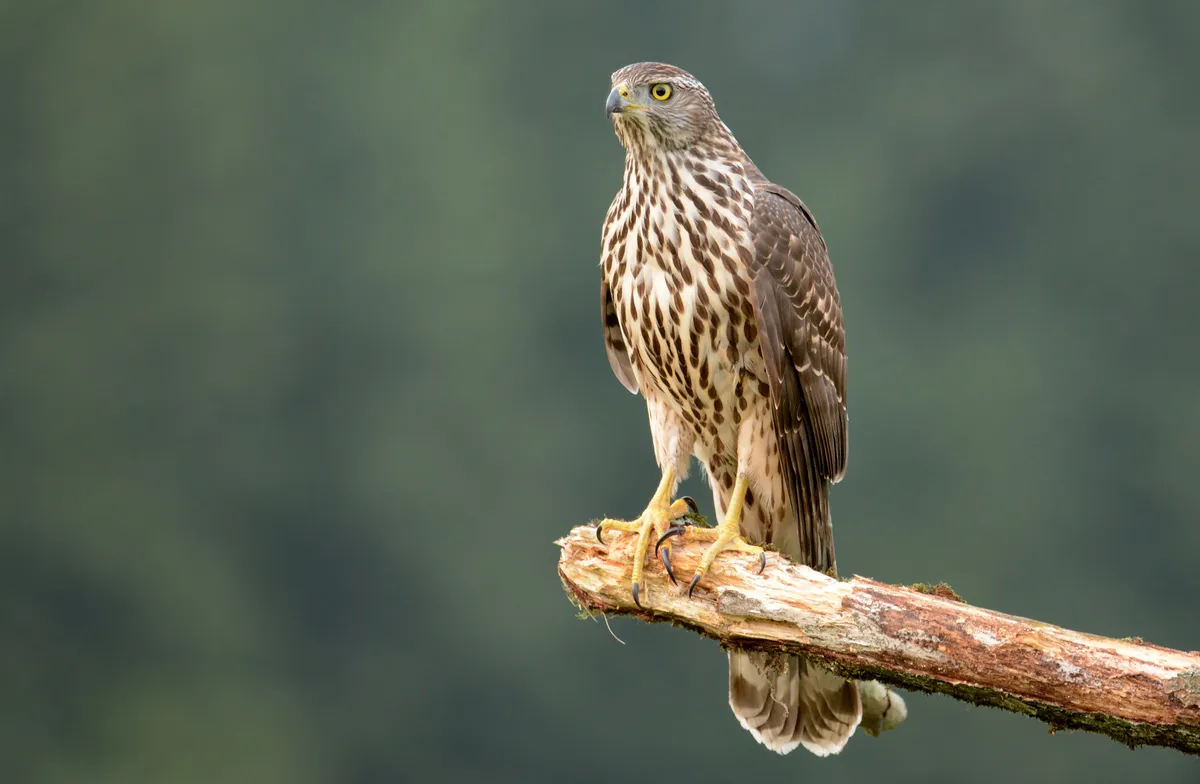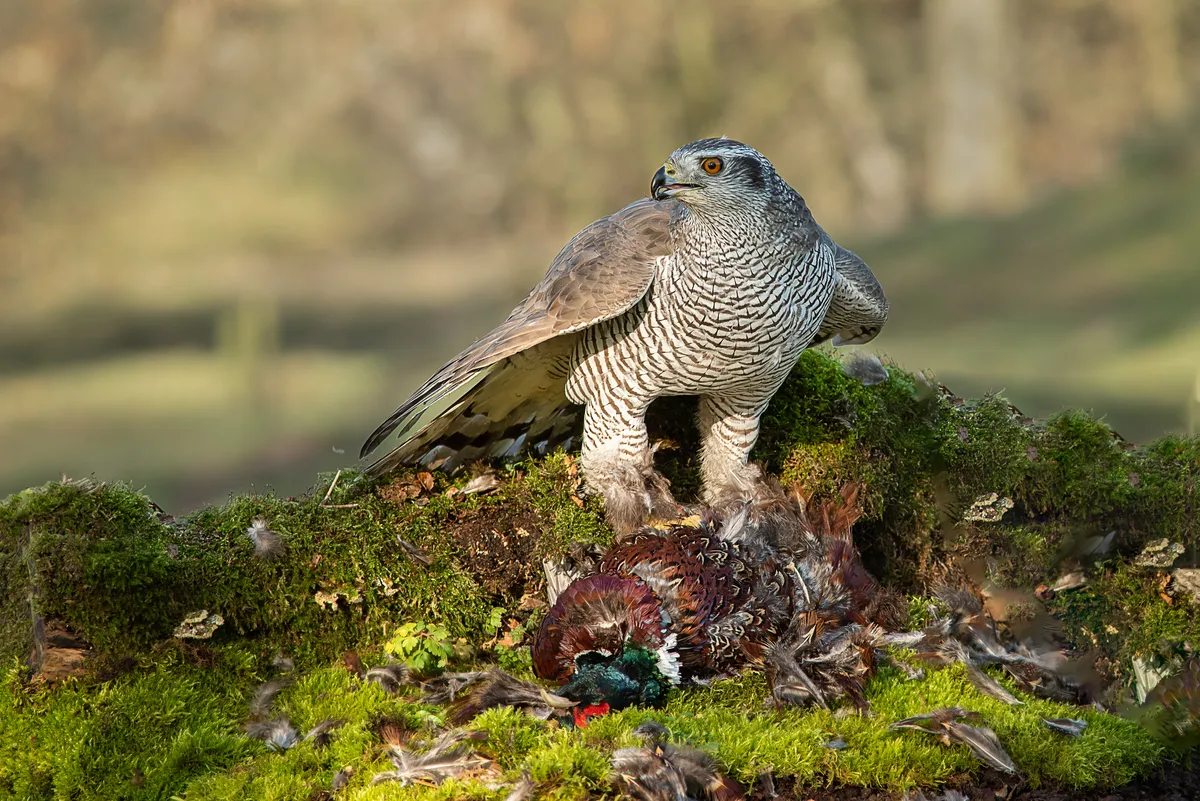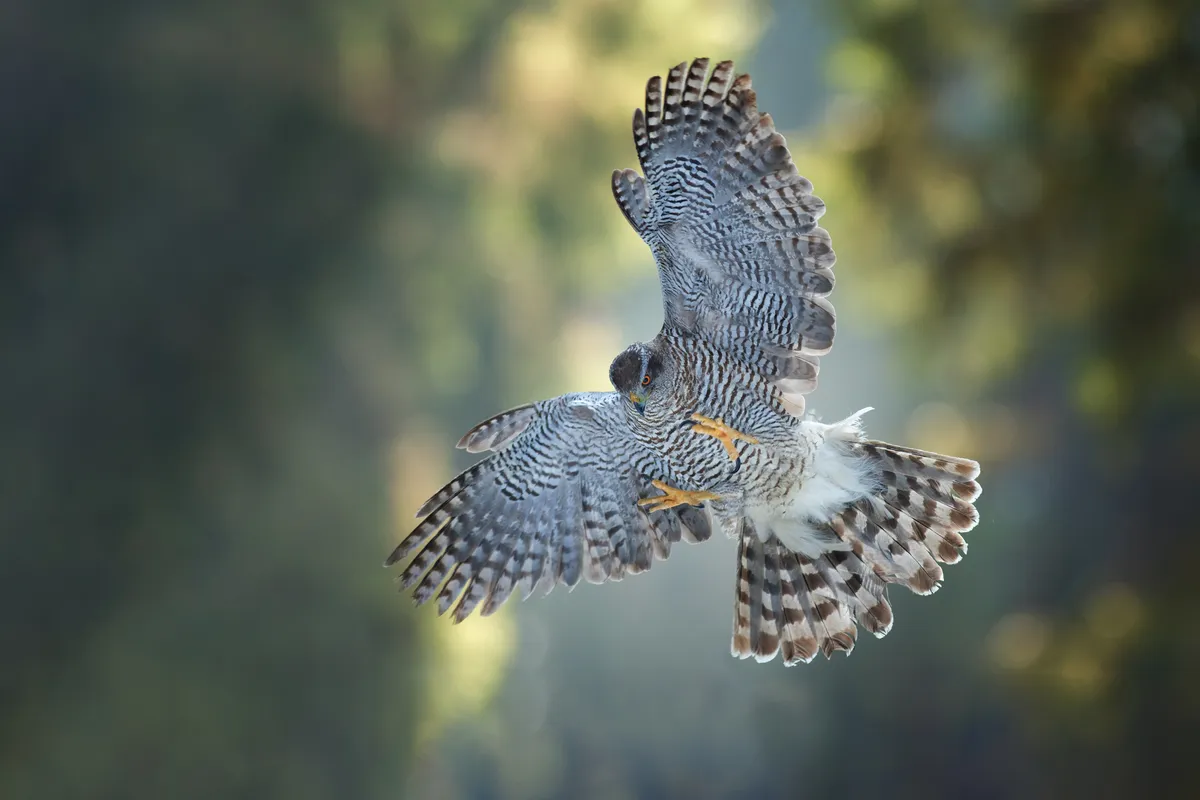1
Is the goshawk population increasing?
Exterminated from the UK in the 1800s by game-keepers and egg collectors, goshawks have been recolonising since the 1960s, through releases and escapes of falconry birds. Up to 430 pairs now breed here.

2
Where do goshawks live?
Goshawks continue to be shot and trapped on private land. In Britain, they are faring best in large forestry plantations and generally prefer areas as far away from humans as possible. In Germany, it's a completely different story, and they're quite easy to see in central Berlin.
3
What do goshawks hunt and eat?
Goshawks (from the Old English for "goose-hawk") are more likely to hunt hares, rabbits, squirrels, waterfowl, game-birds, corvids and pigeons, and will crash through vegetation in pursuit and even give chase on foot.

4
Goshawks were the ultimate falconry bird
The scientific name, Accipiter gentilis, translates as gentle hawk. Among Mediaeval falconers, the goshawk was the raptor of choice of the nobility.
5
The Azores are named after the goshawk
The flag of the Azores features a golden goshawk. Indeed the archipelago's name may derive from the Portuguese for goshawk (açor). Early explorers must have been poor birders - it's unlikely the species ever lived there.

6
Goshawk or sparrowhawk?
Photographic evidence suggests that most goshawks reported from residential gardens are in fact sparrowhawks. Though easily confused, goshawks are larger and sturdier, although not as big as buzzards.
7
Goshawks are active parents
Goshawk pairs copulate as many as 500-600 times per clutch, a number usually associated with promiscuous species, but genetic studies suggest a rather low rate of infidelity.
